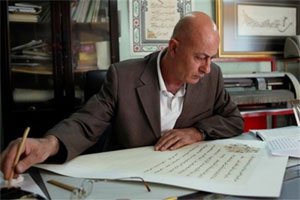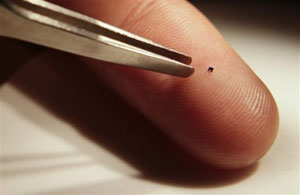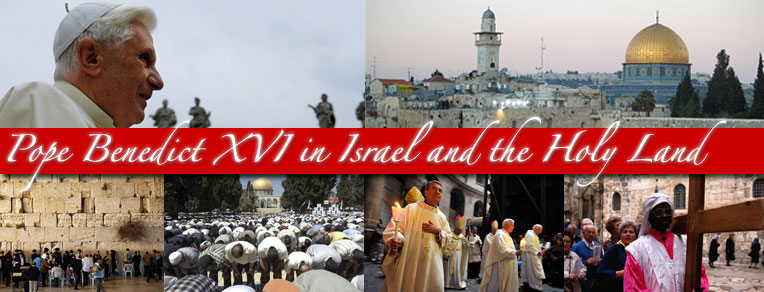Abu Saymeh never read a New Testament text before he was picked for the prestigious assignment by Bethlehem's Christian mayor. He said he has since come to appreciate the shared strands of the two faiths."I found that many of the things emphasized in Christianity exist in our religion," said the 51-year-old Abu Saymeh.
The artist has nearly completed the Gospel's text, which will eventually cover 65 poster-sized pages. It will be accompanied by colored drawings depicting the life of Christ, from the Nativity to the crucifixion.

Mayor Victor Batarseh said he chose Luke among the four Gospels because he felt his writing contains the most detail about Jesus' time in the city. And he picked Abu Saymeh not just because of his talent, but to send a message of peaceful religious coexistence.Not to be outdone, the Israelis have come up with a rather amazing gift of their own (Photo: Associated Press):"It's a message to the world that Bethlehem is the city where Christianity was born," he said. "It's also the place of brotherly relations between Muslims and Christians."
During a May 11 reception at the residence of Israel's president, Shimon Peres, the pope will receive another rare gift of Scripture _ a 300,000-word Hebrew text of the Jewish Bible inscribed on a silicon particle the size of a grain of sand, using nanotechnology.

Israel National News ran a story on Israel's gift back in 2007 (And Out of Zion Will Come the World's First Nano-Torah, by Ezra HaLevi. December 26, 2007):
“We took a piece of silicon and evaporated a very small layer of gold over it, about twenty nanometers thick,” explained Ohad Zohar, a Ph.D. student at the Technion, on Israel National Radio’s Yishai Fleisher Show. A nanometer is about a billionth of a meter.(Thanks to the blog Elder of Ziyon for the tip).“We then used a focused ion beam to inscribe the Biblical text on it,” Zohar said. “What the focused ion beam does is shoot gallium ions, focusing the charged particles on the substrip [of gold]. It digs little holes and each hole is a pixel for whatever picture you would like. In our case this is the Tanach.
“What did you make this for?” asked Fleisher.
“It is not for ordinary use, of course,” Zohar said. “To read it you need very expensive equipment. You cannot read it with a magnifying glass or even the best optical microscope. You need an electron microscope to read it. It is not intended to replace any storage devices out there. We did this as part of a massive educational program aimed at mostly high school students to explain different methods of storing information and spark an interest in Nanotechnology.” The project was sponsored and conducted at the Russell Berrie Nanotechnology Institute at Haifa's Technion Institute of Technology.










No comments:
Post a Comment